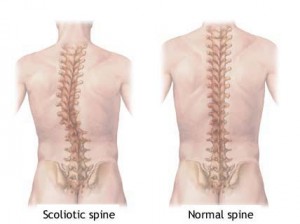We get asked a lot to explain what Postural Restoration is in simple terms. Indeed, the concepts are not simple – and in most healthcare providers’ opinions, the ideas are a bit peculiar.
The basis of Postural Restoration lies in an understanding of our anatomy and an appreciation that our bodies are not symmetrical and never will be. The fact that we have one of some organs (ie: heart and liver), as well as organs that are shaped differently on one side of our body compared to the other (ie: lungs and diaphragm), results in mild asymmetrical positioning of our bones and muscles. Consequently, movement of our limbs, trunk, and spine tends to be easier or harder on one side in comparison to the other. A good look in the mirror will reveal mild to drastic differences in the appearance of our rib cage, shoulder height, foot position, and even ears or eyes, when comparing right versus left.
(more…)
 – back pain, bracing, surgery, disfiguration. What people may not realize is that often a diagnosis of scoliosis leads to a course of orthopedic physical therapy. S.T.A.R. PT has been practicing a somewhat unique approach to conservatively treating scoliosis. We understand that we will not be able to completely correct the spinal curvature in idiopathic scoliosis, but we believe that much can be gained from a program to manage the curvature by reducing musculoskeletal torsion and improving the mechanics of the thorax.
– back pain, bracing, surgery, disfiguration. What people may not realize is that often a diagnosis of scoliosis leads to a course of orthopedic physical therapy. S.T.A.R. PT has been practicing a somewhat unique approach to conservatively treating scoliosis. We understand that we will not be able to completely correct the spinal curvature in idiopathic scoliosis, but we believe that much can be gained from a program to manage the curvature by reducing musculoskeletal torsion and improving the mechanics of the thorax.